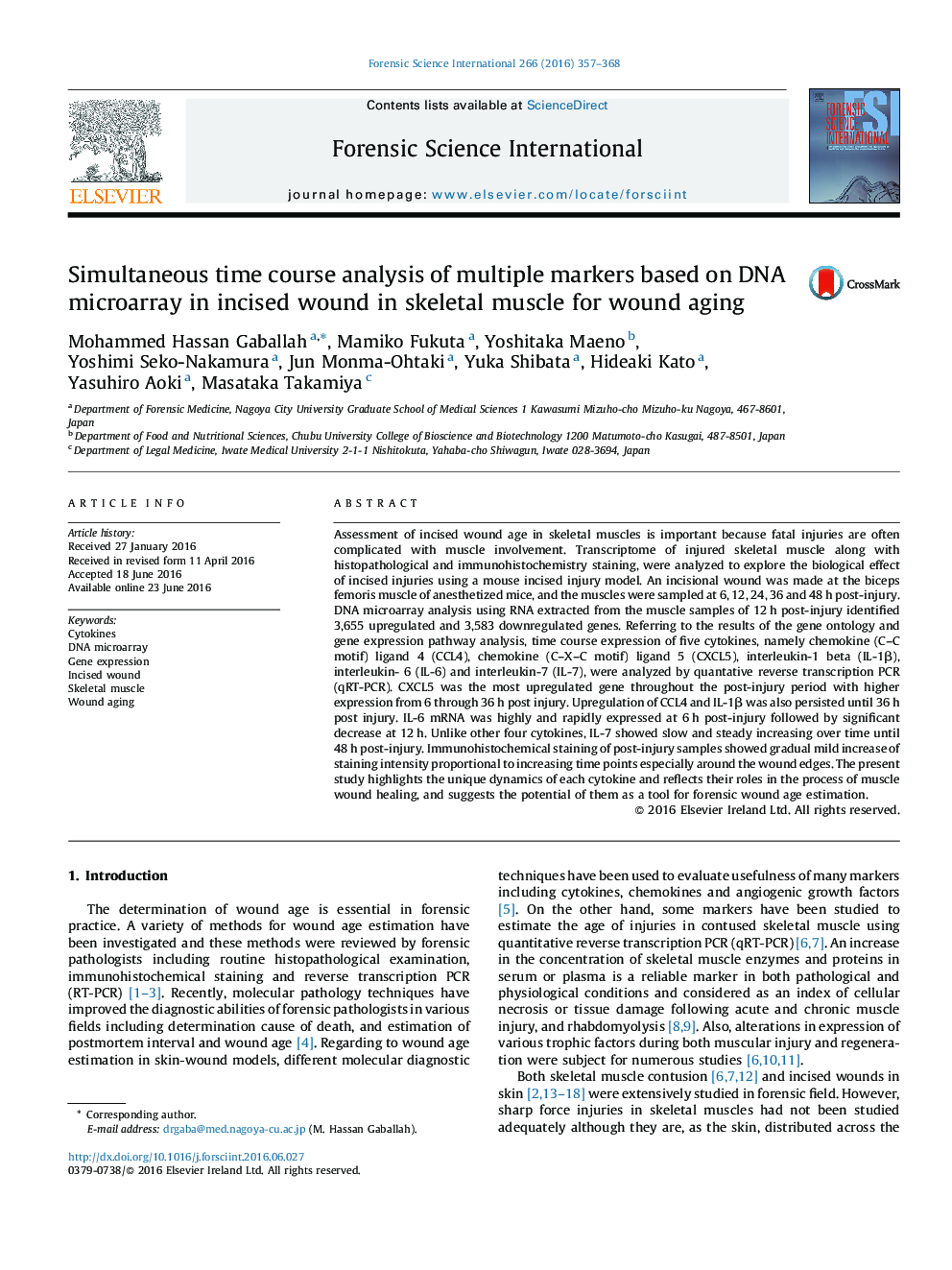| Article ID | Journal | Published Year | Pages | File Type |
|---|---|---|---|---|
| 6551623 | Forensic Science International | 2016 | 12 Pages |
Abstract
Assessment of incised wound age in skeletal muscles is important because fatal injuries are often complicated with muscle involvement. Transcriptome of injured skeletal muscle along with histopathological and immunohistochemistry staining, were analyzed to explore the biological effect of incised injuries using a mouse incised injury model. An incisional wound was made at the biceps femoris muscle of anesthetized mice, and the muscles were sampled at 6, 12, 24, 36 and 48 h post-injury. DNA microarray analysis using RNA extracted from the muscle samples of 12 h post-injury identified 3,655 upregulated and 3,583 downregulated genes. Referring to the results of the gene ontology and gene expression pathway analysis, time course expression of five cytokines, namely chemokine (C-C motif) ligand 4 (CCL4), chemokine (C-X-C motif) ligand 5 (CXCL5), interleukin-1 beta (IL-1β), interleukin- 6 (IL-6) and interleukin-7 (IL-7), were analyzed by quantative reverse transcription PCR (qRT-PCR). CXCL5 was the most upregulated gene throughout the post-injury period with higher expression from 6 through 36 h post injury. Upregulation of CCL4 and IL-1β was also persisted until 36 h post injury. IL-6 mRNA was highly and rapidly expressed at 6 h post-injury followed by significant decrease at 12 h. Unlike other four cytokines, IL-7 showed slow and steady increasing over time until 48 h post-injury. Immunohistochemical staining of post-injury samples showed gradual mild increase of staining intensity proportional to increasing time points especially around the wound edges. The present study highlights the unique dynamics of each cytokine and reflects their roles in the process of muscle wound healing, and suggests the potential of them as a tool for forensic wound age estimation.
Related Topics
Physical Sciences and Engineering
Chemistry
Analytical Chemistry
Authors
Mohammed Hassan Gaballah, Mamiko Fukuta, Yoshitaka Maeno, Yoshimi Seko-Nakamura, Jun Monma-Ohtaki, Yuka Shibata, Hideaki Kato, Yasuhiro Aoki, Masataka Takamiya,
